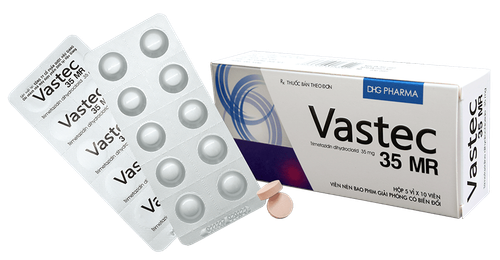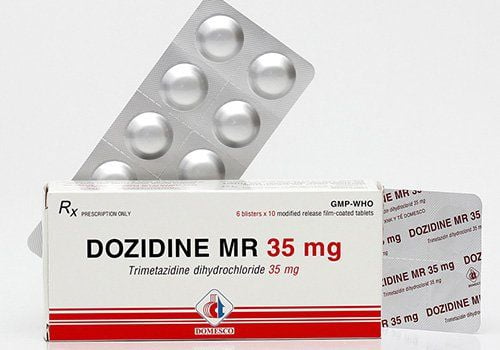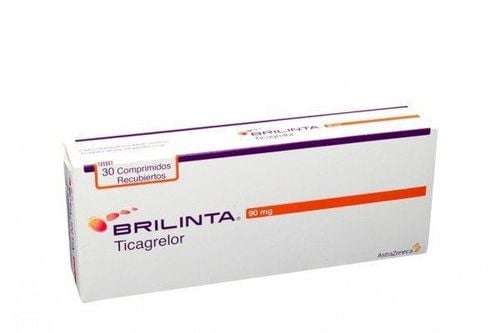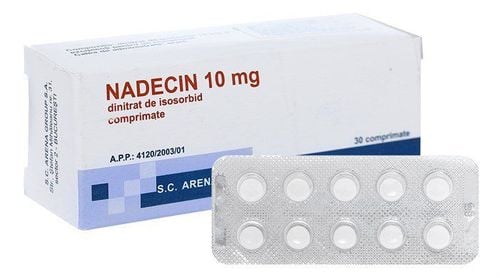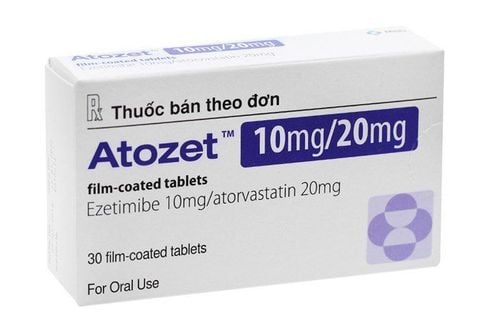This is an automatically translated article.
Platetica is a highly effective drug in the treatment of atherosclerosis in patients with acute coronary syndromes. Let's learn more about the use of Platetica through the article below.1. What is Platetica?
Platetica contains the main ingredient Ticagrelor 90mg - a beneficial agent that helps reduce the risk of death from cardiovascular problems, myocardial infarction and stroke, and also relieves unstable angina.Pharmaceutical name: Platetica drug. Drug group: Belongs to the cardiovascular group. Ingredients: Ticagrelor 90mg. Dosage form: Tablet form. Packing: Packed in boxes of 10 blisters x 10 tablets.
2. What are the uses of Platetica?
Ticagrelor, co-administered with acetylsalicylic acid (ASA), is indicated for the prevention of atherothrombotic events in adult patients with acute coronary syndromes (angina pectoris). unstable, ST elevation myocardial infarction [ST elevation Myocardial Infarction (STEMI]) or non-ST elevation myocardial infarction [non ST elevation Myocardial Infarction (NSTEMI]). Including patients undergoing percutaneous coronary intervention (PCI), patients receiving medical treatment or coronary artery bypass grafting (CABG).3. Usage and dosage
3.1. Dosage
Patients should be started with a single loading dose of 180mg Ticagrelor (equivalent to two 90mg tablets), then maintained at a regular dose of 90mg twice daily. Patients taking Ticagrelor should also take ASA every day, unless there are specific contraindications. After the first dose of ASA, Ticagrelor should be administered at a maintenance dose of 75-100 mg ASA. Long-term treatment up to 12 months is recommended, unless clinically indicated to discontinue Ticagrelor. Experience with drug therapy after 12 months is still limited. For patients with acute coronary syndromes, premature discontinuation of any antiplatelet therapy, including ticagrelor, may increase the risk of cardiovascular death or myocardial infarction due to adverse events. potential illness. Therefore, patients should avoid premature discontinuation of treatment. Avoid forgetting to take medication during treatment. If the patient forgets to take a dose of Ticagrelor, they should only take 1 90mg tablet (the next dose) at the usual time, absolutely do not take up by doubling the missed dose. Patients already treated with clopidogrel can be switched directly to ticagrelor if necessary. The transition from prasugrel to ticagrelor has not been studied. For elderly patients: No dosage adjustment is required in elderly patients. For patients with renal impairment: No dosage adjustment is required for patients with renal impairment. There is currently no information regarding the treatment of patients on hemodialysis, therefore ticagrelor is not recommended for this patient population. Hepatic impairment: Ticagrelor has not been studied in patients with severe hepatic impairment. Therefore, it is contraindicated in patients with severe hepatic impairment. There are limited data on the effects of the drug in patients with moderate hepatic impairment. Therefore, no dosage adjustment is recommended, but caution should be exercised when ticagrelor is used in this population. In patients with mild hepatic impairment, no dosage adjustment is required. For children: The safety and efficacy of ticagrelor in children under 18 years of age have not been precisely established in the approved indications for adults.3.2. How to use
Platetica is available in tablet form, to be taken orally by swallowing the tablet whole with a full glass of water, with or without food.In case the patient cannot swallow the tablet whole, the tablet can be crushed into a fine powder, then dissolved in half a glass of water and drunk immediately, rinsed the glass with half a glass of water and drank it all. Alternatively, the suspension can also be administered via a nasogastric tube (type CH8 or larger). It is important to pay special attention that the nasogastric tube should be rinsed with clean water after the suspension has been administered.
4. Note when taking medicine
4.1. Contraindications
Ticagrelor is contraindicated in the following cases:Patients with allergy or hypersensitivity to any of the ingredients listed in the excipients section. The patient is suffering from diarrhea caused by an illness. People with a history of bleeding in the skull, severe liver failure. Co-administration of Ticagrelor with strong inhibitors of CYP3A4 (such as ritonavir, ketoconazole, nefazodone, clarithromycin and atazanavir) is contraindicated, as it may result in a marked increase in exposure to ticagrelor. Usually, when the patient is allergic to any of the active ingredients in the drug's ingredients, the drug should not be used. Other cases will be clearly stated in the doctor's prescription or the accompanying medication leaflet. For Platetica, a contraindication is understood as an absolute contraindication, which means that for any reason, the patient is allowed to use it flexibly.
4.2. Side effects
During the use of Ticagrelor, patients are at risk of experiencing some unwanted side effects such as:Very common:
Blood and lymphatic system: Bleeding disorders. Metabolism and nutrition: Causes increased uric acid in the blood. Respiratory system, thoracic and lower middle: Causes difficulty breathing. Common:
Metabolism and nutrition: Causes gout or gouty arthritis. Nervous system: Causes dizziness, headache, fainting. Blood vessels: Low blood pressure. Respiratory, thoracic and mediastinal: Causes bleeding in the respiratory tract. Digestive system: Causes diarrhea, nausea, vomiting, dyspepsia, constipation, gastrointestinal bleeding. Skin and subcutaneous tissues: Causes rash, itching, bleeding in the skin or under the skin. Tests: Increases blood creatinine. Injury, toxicity, or procedural complications: Bleeding from injury or bleeding after procedures. Uncommon:
Immune system: Hypersensitivity including angioedema. Psychiatric: Feelings of anxiety, insecurity. Benign, malignant or unspecified tumors (including cysts and polyps): Bleeding at the tumor site. Nervous system: Hemorrhage in the brain. Eyes: Causes bleeding in the eye. Ear and labyrinth: Causes bleeding in the ear. Gastrointestinal: Causes bleeding in the retroperitoneal cavity. Musculoskeletal and skeletal connective tissue: Causes bleeding in the muscle. Reproductive system: Causes bleeding in the reproductive system.
4.3. Drug interactions
Similar to other modern medicines, Ticagrelor when taken with some of the following drugs will cause some interactions:Ticagrelor is a major substrate of CYP3A4 enzyme and a weak inhibitor of CYP3A4. On the other hand, it is also a substrate of P-gp and weakly inhibits P-gp, and can increase the concentration and exposure time of P-gp substrates. Drugs that are metabolised by the enzyme CYP3A4. Cyclosporin (which is an inhibitor of P-gp, CYP3A). Drugs that are metabolised by the enzyme CYP3A4. Drugs that are metabolized by the enzyme CYP2C9. Oral contraceptives. Substances of P-glycoprotein (P-gp) (including cyclosporin and digoxin). Drugs that cause bradycardia. Above is all the information about the use of Platetica and how to use it, the most important notes that we need to know. However, in order to maximize the effectiveness of the drug as well as ensure safety, patients should only use it exactly as prescribed by the doctor or pharmacist.
Please dial HOTLINE for more information or register for an appointment HERE. Download MyVinmec app to make appointments faster and to manage your bookings easily.




